Cabin fever refers to the irritability and restlessness experienced when confined indoors for extended periods․ It affects both children and parents, causing stress and boredom․ This guide offers practical strategies to combat it through engaging activities and mental health tips, ensuring a harmonious family environment during isolation․
Understanding the Concept of Cabin Fever
Cabin fever is a colloquial term describing the psychological and emotional distress caused by prolonged confinement in a limited space․ It is not a medically defined condition but rather a folk concept that captures feelings of irritability, restlessness, and boredom․ Often triggered by isolation, it can arise during winter months, quarantines, or remote vacations․ While it affects both children and adults, its impact on families is particularly significant․ Parents and kids alike may experience frustration, leading to strained relationships․ Understanding cabin fever involves recognizing its root causes, such as lack of stimulation and freedom, and addressing them proactively; This concept emphasizes the importance of mental well-being and the need for strategies to maintain harmony during extended indoor periods․
Why Parents Need a Guide to Cabin Fever
Parents need a guide to cabin fever to effectively manage the challenges of prolonged indoor confinement with their families․ Cabin fever often leads to stress, irritability, and boredom, which can strain relationships and hinder a child’s development․ A guide provides practical strategies to keep children engaged, maintain mental health, and foster a positive environment․ It helps parents create structured routines, identify age-appropriate activities, and address emotional needs․ Additionally, it offers tips to balance personal well-being with caregiving responsibilities, ensuring the entire family remains harmonious and productive during isolation․ By equipping parents with tools and ideas, a guide transforms cabin fever into an opportunity for bonding and growth․
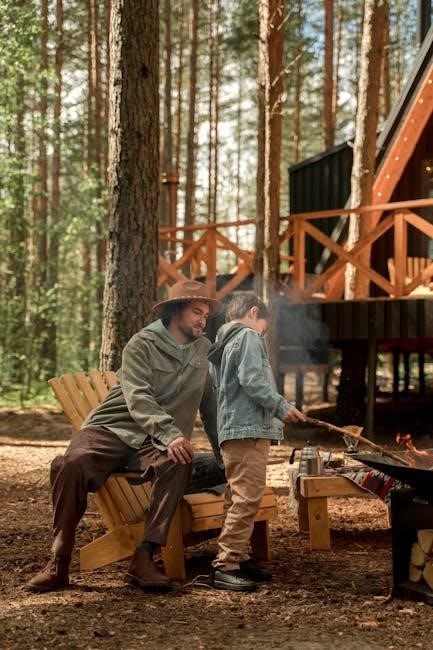
Recognizing the Symptoms of Cabin Fever
Cabin fever symptoms include restlessness, irritability, and anxiety from prolonged confinement․ Children may exhibit fussiness, while parents often feel stressed or isolated․ Early recognition helps address these issues effectively․
Common Psychological Symptoms in Children
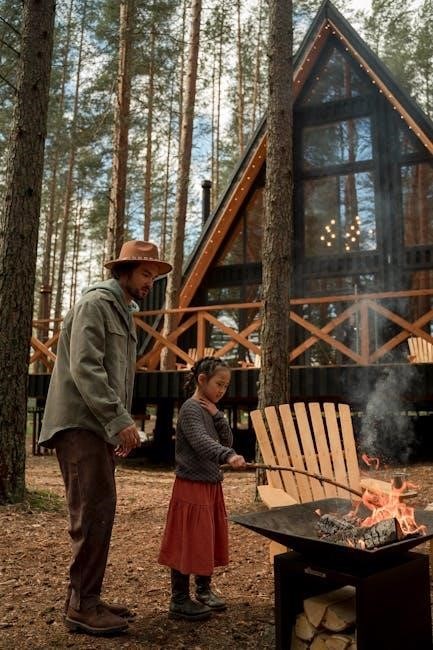
Cabin fever in children often manifests as restlessness, irritability, and frustration due to prolonged indoor confinement․ Kids may exhibit increased fussiness, shorter attention spans, and boredom․ They might also show signs of overstimulation, such as crankiness or clinginess, especially in smaller spaces․ Older children could act out with rebellious behavior or complain excessively․ These symptoms stem from a lack of stimulation and physical activity, which are essential for their development․ Parents should recognize these signs early to intervene with engaging activities and creative play․ Encouraging structured routines, such as scheduled playtime or educational tasks, can help alleviate these psychological effects․ Addressing these symptoms proactively fosters a more positive environment for the entire family․
How Parents Experience Cabin Fever Differently
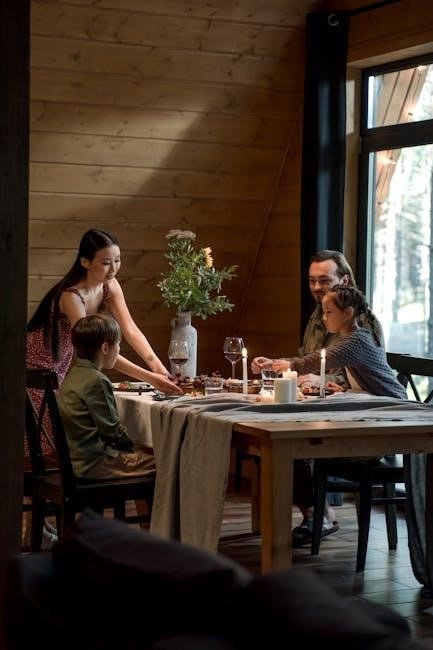
Parents often experience cabin fever differently, as they juggle caregiving responsibilities with their own emotional well-being․ The stress of managing children’s needs indoors can lead to irritability, frustration, and feelings of isolation․ Unlike children, who may act out due to boredom, parents feel the weight of maintaining order and entertaining their families․ Financial stress and the pressure to create a stimulating environment can exacerbate these feelings․ Additionally, parents may struggle with the lack of personal space and time for self-care, leading to emotional exhaustion․ Recognizing these unique challenges is crucial for developing strategies that support both parents’ and children’s mental health during prolonged indoor periods․ Addressing these differences ensures a more balanced and harmonious family environment․
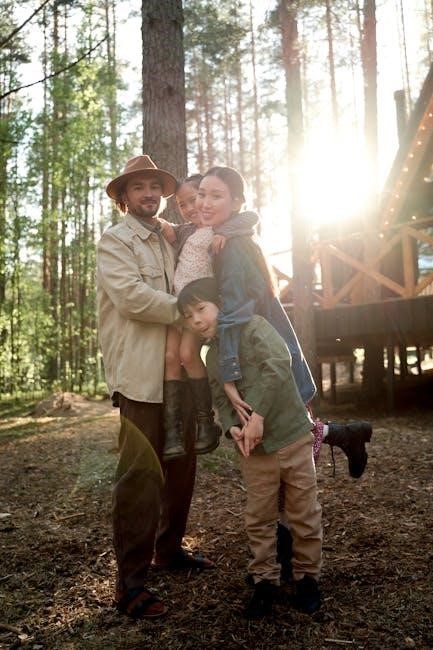
Strategies to Combat Cabin Fever
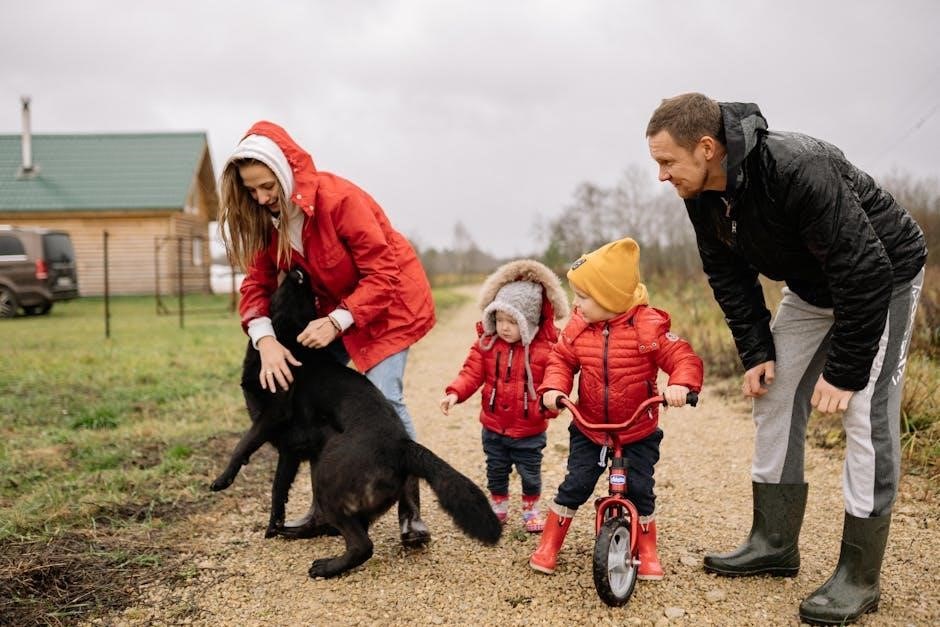
Engage in indoor games, creative projects, and educational activities to keep families entertained․ Establish routines, practice mindfulness, and ensure mental health support for both parents and children․
Engaging Indoor Activities for Families
Combat cabin fever with fun and creative indoor activities that cater to all ages․ Arts and crafts projects, such as painting, drawing, or DIY crafts, foster creativity and bonding․ Indoor scavenger hunts can keep children active and excited, while board games, puzzles, and card games promote mental stimulation․ Families can also enjoy indoor camping by setting up tents or forts, creating a sense of adventure․ Cooking or baking together offers a hands-on experience and teaches valuable skills․ Additionally, indoor obstacle courses, dance parties, or karaoke sessions provide physical activity and laughter․ These activities not only combat boredom but also strengthen family bonds and improve mental well-being during isolation․ By incorporating variety, parents can ensure a balanced and enjoyable indoor environment for everyone․
Practical Tips for Maintaining Mental Health
Maintaining mental health during cabin fever requires intentional effort and mindfulness․ Establishing a daily routine helps create a sense of structure and normalcy․ Encourage open conversations with family members to address feelings of frustration or boredom․ Practice deep breathing exercises or meditation to reduce stress and anxiety․ Incorporate physical activity, such as indoor yoga or dance sessions, to boost mood and energy levels․ Set boundaries to ensure personal space and time for self-care․ Engage in hobbies or creative projects to distract from irritability; Lastly, stay connected with friends and family through virtual communication to combat feelings of isolation․ By prioritizing mental well-being, parents can foster a positive and resilient environment for the whole family․

Creating a Fun and Productive Environment
Transform your space with creative indoor games, art projects, and family bonding activities to foster joy and productivity, making confinement both enjoyable and meaningful for everyone․
Indoor Games and Creative Projects
Engage your family with exciting indoor games like treasure hunts, board games, and DIY crafts to keep everyone entertained․ Arts and crafts projects, such as painting or building forts, foster creativity and teamwork․ Indoor obstacle courses and dance parties encourage physical activity and laughter․ These activities not only combat boredom but also strengthen family bonds․ Encourage children to express themselves through creative writing or storytelling, while parents can join in to model imaginative play․ Rotate activities to keep things fresh and tailored to different interests․ By incorporating these ideas, you can transform confinement into a time of growth, fun, and lasting memories for the whole family․
The Importance of Routine and Structure
Maintaining a consistent routine is essential for managing cabin fever, as it provides a sense of stability and normalcy․ Establishing a daily schedule helps children feel secure and reduces irritability․ Start with structured mealtimes, followed by alternating periods of active play and quiet activities․ Incorporate educational or creative tasks to keep minds engaged․ Parents can also schedule personal downtime to recharge, ensuring they remain patient and supportive․ A balanced routine fosters a sense of control and purpose, minimizing restlessness․ While flexibility is important, a clear structure helps families navigate confinement more effectively․ By prioritizing routine, parents can create an environment that promotes mental well-being and keeps everyone motivated during challenging times․
Additional Resources for Parents
Explore recommended books like Diary of a Wimpy Kid: Cabin Fever and online guides for managing cabin fever․ Join community support groups and seek expert advice․
Recommended Books and Online Guides
For parents seeking guidance, Diary of a Wimpy Kid: Cabin Fever by Jeff Kinney offers a humorous yet relatable perspective on family isolation․ Online platforms like Common Sense Media provide detailed reviews and age ratings, helping parents choose appropriate content․ Websites such as PBS Kids and Verywell Family offer practical tips for indoor activities and mental health strategies․ Additionally, blogs like “The Mom’s Guide to Combating Cabin Fever” share creative ideas for keeping children entertained․ These resources emphasize the importance of maintaining routines, encouraging creativity, and fostering family bonding․ By leveraging these books and guides, parents can transform cabin fever into an opportunity for growth and connection․

Community Support and Expert Advice
Connecting with local parenting groups and online forums can provide valuable support for families dealing with cabin fever․ Many communities offer virtual workshops and webinars focused on indoor activities and mental health strategies․ Experts, such as child development specialists, often share tips on maintaining routines and fostering creativity․ Online platforms like parenting blogs and social media groups are excellent resources for exchanging ideas and advice․ Additionally, organizations like the American Academy of Pediatrics offer guidance on managing stress and promoting emotional well-being during isolation․ By leveraging these community resources and expert recommendations, parents can create a supportive environment that benefits the entire family․



